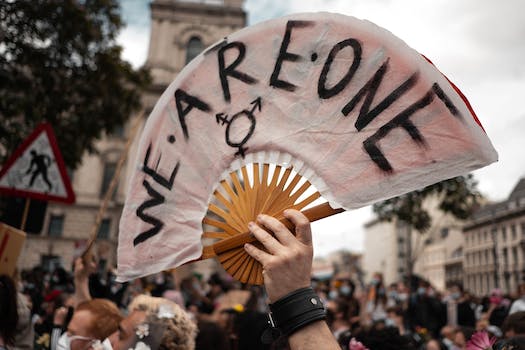Gun Violence in Chicago: A Look at the Statistics in June 2013
In June 2013, Chicago experienced a surge in gun violence that left many residents and officials concerned. The city had already been grappling with high levels of gun violence for years, but the numbers in June were particularly alarming. According to data from the Chicago Police Department, there were 46 homicides and 225 shootings in the city during the month of June alone.
These statistics were a stark reminder of the ongoing problem of gun violence in Chicago. The city had already seen a significant increase in homicides in 2012, with a total of 506 murders reported for the year. This was the highest number of homicides in Chicago since 2008, and it was a trend that continued into 2013.
The causes of the violence were complex and multifaceted. Some experts pointed to the prevalence of gangs and the drug trade in certain neighborhoods, while others cited poverty, unemployment, and a lack of access to education and other resources. Whatever the root causes, the violence was taking a toll on the city’s residents and its reputation.
In response to the surge in violence, Chicago Mayor Rahm Emanuel and Police Superintendent Garry McCarthy announced a number of initiatives aimed at reducing crime and improving public safety. These included the deployment of additional police officers to high-crime areas, the creation of a new gang enforcement unit, and the implementation of a new community policing strategy.
Despite these efforts, the violence continued. In fact, the month of June saw some of the deadliest days in Chicago’s recent history. On June 15th, for example, there were 10 homicides in a single day, making it the deadliest day in Chicago in over a decade.
The violence also had a disproportionate impact on certain communities. The majority of the homicides and shootings in June occurred in predominantly African American and Latino neighborhoods on the city’s South and West sides. This highlighted the deep-seated racial and economic disparities that continue to plague Chicago and other cities across the country.
The surge in violence also sparked a national conversation about gun control and the need for stricter laws to regulate the sale and possession of firearms. Many advocates pointed to Chicago’s strict gun laws as evidence that such laws were not effective in reducing violence. However, others argued that the problem was not the laws themselves, but rather the lack of enforcement and the ease with which guns could be obtained from neighboring states with more lax regulations.
In the years since June 2013, Chicago has continued to grapple with high levels of gun violence. While there have been some successes in reducing crime in certain neighborhoods, the problem remains deeply entrenched in many parts of the city. The ongoing debate over gun control and the root causes of violence in Chicago and other cities across the country is likely to continue for years to come.
The Chicago Blackhawks Win the Stanley Cup: Celebrations and Reactions
In June 2013, the city of Chicago was buzzing with excitement as the Chicago Blackhawks won the Stanley Cup for the second time in four years. The team’s victory sparked a wave of celebrations and reactions throughout the city, as fans and residents alike came together to show their support for the team.
The Blackhawks’ victory was a hard-fought one, with the team battling their way through a grueling playoff schedule to emerge victorious. The team’s star players, including Jonathan Toews, Patrick Kane, and Duncan Keith, played key roles in the team’s success, with each player contributing crucial goals and assists throughout the playoffs.
As news of the Blackhawks’ victory spread throughout the city, fans began to gather in the streets to celebrate. Crowds of people could be seen waving Blackhawks flags and wearing team jerseys, as they cheered and chanted in support of their beloved team.
The celebrations continued throughout the night, with fans flocking to bars and restaurants across the city to watch the team’s victory parade on television. Many fans also took to social media to share their excitement and congratulations with the team, using hashtags like #Blackhawks and #StanleyCupChampions to show their support.
The Blackhawks’ victory was also met with widespread praise and admiration from sports commentators and analysts across the country. Many praised the team’s resilience and determination, noting that their victory was a testament to their hard work and dedication throughout the season.
Despite the team’s success, however, there were also some concerns about the impact of the celebrations on the city. Some residents expressed frustration with the crowds and noise, noting that the celebrations had disrupted their daily routines and made it difficult to get around the city.
In response to these concerns, city officials worked to ensure that the celebrations remained safe and orderly. Police officers were deployed throughout the city to maintain order and prevent any potential incidents, while city workers cleaned up the streets and public spaces after the celebrations had ended.
Overall, the Blackhawks’ victory in June 2013 was a momentous occasion for the city of Chicago, as fans and residents alike came together to celebrate the team’s success. While there were some concerns about the impact of the celebrations on the city, the overwhelming sense of pride and excitement that the victory generated was a testament to the team’s enduring popularity and the city’s deep love for its sports teams.
Chicago Pride Parade 2013: Highlights and Controversies
In June 2013, Chicago hosted its annual Pride Parade, a celebration of the LGBTQ+ community. The parade, which has been held in the city since 1970, is one of the largest in the country, drawing over one million spectators each year. The 2013 parade was no exception, with a record-breaking attendance of over one million people.
The parade featured a diverse array of floats, performers, and marchers, all celebrating the LGBTQ+ community. Highlights included a performance by the Chicago Gay Men’s Chorus, a float featuring drag queens from the popular TV show RuPaul’s Drag Race, and a group of LGBTQ+ veterans marching in honor of their service.
However, the parade was not without controversy. One of the most contentious issues was the presence of a group called Queers Against Israeli Apartheid (QAIA). The group, which had participated in previous Pride Parades, was accused of promoting anti-Semitic views and using the parade as a platform to spread their message.
The controversy surrounding QAIA led to calls for the group to be banned from the parade. Some argued that allowing the group to participate would be a violation of the parade’s policy of inclusivity and tolerance. Others argued that banning the group would be a violation of their right to free speech.
In the end, the organizers of the parade decided to allow QAIA to participate, but with certain restrictions. The group was not allowed to use the words “Israeli apartheid” in their signage or chants, and they were required to sign a pledge agreeing to abide by the parade’s code of conduct.
Despite the controversy, the 2013 Pride Parade was largely a success. The event brought together people from all walks of life to celebrate the LGBTQ+ community and promote equality and acceptance. It also served as a reminder of the progress that has been made in the fight for LGBTQ+ rights, while also highlighting the work that still needs to be done.
In the years since the 2013 Pride Parade, Chicago has continued to be a leader in the fight for LGBTQ+ rights. The city has passed numerous laws and policies aimed at protecting the rights of LGBTQ+ individuals, including a ban on conversion therapy and a requirement that all single-occupancy restrooms be gender-neutral.
Overall, the 2013 Pride Parade in Chicago was a reflection of the ongoing struggle for LGBTQ+ rights and acceptance. While there were certainly controversies and challenges, the event ultimately served as a powerful reminder of the importance of celebrating diversity and promoting equality. As the fight for LGBTQ+ rights continues, events like the Pride Parade will continue to play a vital role in promoting acceptance and understanding.
The Closure of 50 Chicago Public Schools: Impact on Students and Communities
In June 2013, the city of Chicago made a controversial decision to close 50 public schools, affecting thousands of students and their communities. The decision was met with protests and outrage from parents, teachers, and community members who argued that the closures would have a devastating impact on the affected neighborhoods.
The closures were part of a larger plan by the Chicago Public Schools (CPS) to address a budget deficit and improve academic performance. The district argued that the schools being closed were underutilized and had low academic performance, and that consolidating them would save money and allow for more resources to be directed towards the remaining schools.
However, critics of the plan argued that the closures would disproportionately affect low-income and minority communities, and that the district had not adequately considered the impact on students and families. Many of the schools being closed were located in areas with high rates of poverty and violence, and were seen as anchors of stability and support for the surrounding community.
The closure of the schools also raised concerns about the impact on students’ education and well-being. Many students would be forced to transfer to new schools, potentially disrupting their academic progress and social connections. Some students would have to travel longer distances to get to school, which could be a safety concern in some neighborhoods.
In addition, the closures would result in the loss of jobs for hundreds of teachers and staff members, many of whom had dedicated years of service to their schools and communities. The district promised to help these employees find new positions, but many were skeptical of these assurances.
The decision to close the schools was not made lightly, and the district faced intense scrutiny and criticism from all sides. Some argued that the closures were necessary to address the district’s financial problems and improve academic outcomes, while others saw them as a callous and shortsighted move that would harm some of the city’s most vulnerable residents.
In the end, the closures went ahead as planned, and the affected communities were left to deal with the aftermath. Some students and families were able to adjust to the changes and find new schools that met their needs, while others struggled with the disruption and uncertainty.
The closure of the schools also sparked a broader conversation about the state of public education in Chicago and the challenges facing urban school districts across the country. Many argued that the closures were symptomatic of larger issues, such as underfunding, inequality, and a lack of community engagement.
Despite the controversy and criticism, the district maintained that the closures were necessary to improve the quality of education for all students in Chicago. Whether or not this goal was achieved remains a matter of debate, but the closure of the 50 public schools in June 2013 will be remembered as a significant moment in the city’s history, and a reminder of the complex and often contentious nature of public education policy.
The Chicago Cubs’ Struggle Continues: A Recap of June 2013 Games and Results
In June 2013, the Chicago Cubs continued to struggle on the baseball field. The team had a record of 25-51, which put them in last place in the National League Central division. Despite the team’s poor performance, there were some bright spots during the month.
On June 4th, the Cubs faced off against the Los Angeles Angels. The game was tied 1-1 in the bottom of the ninth inning when Cubs’ outfielder Nate Schierholtz hit a walk-off home run to give the Cubs a 2-1 victory. It was a thrilling moment for Cubs fans, who had not seen many wins during the season.
The Cubs’ next series was against the Pittsburgh Pirates, who were in first place in the division. The Cubs lost the first two games of the series, but they were able to salvage a win in the final game. Cubs’ pitcher Travis Wood had a strong outing, allowing only one run in seven innings. The Cubs won the game 4-3, with Schierholtz hitting another home run.
The Cubs then traveled to New York to face the Mets. The first game of the series was a disaster for the Cubs, as they lost 4-3 in 13 innings. The Cubs had a 3-0 lead going into the bottom of the ninth inning, but closer Kevin Gregg gave up three runs to tie the game. The Mets eventually won on a walk-off single in the 13th inning.
The Cubs were able to bounce back in the second game of the series, winning 6-3. Cubs’ first baseman Anthony Rizzo had a big game, hitting two home runs and driving in four runs. The Cubs lost the final game of the series, but Rizzo continued his hot streak, hitting another home run.
The Cubs returned home to face the Cincinnati Reds. The first game of the series was a pitchers’ duel, with the Cubs’ Jeff Samardzija and the Reds’ Mat Latos both pitching well. The game was tied 0-0 going into the ninth inning, but the Reds were able to score a run to win the game. The Cubs were able to win the second game of the series, with Schierholtz hitting yet another home run.
The Cubs’ final series of the month was against the Seattle Mariners. The Cubs lost the first two games of the series, but they were able to win the final game. Cubs’ pitcher Edwin Jackson had a strong outing, allowing only one run in seven innings. The Cubs won the game 7-6, with Rizzo hitting another home run.
Overall, June 2013 was a tough month for the Cubs. The team was not able to string together many wins, and they were still in last place in the division. However, there were some bright spots during the month, including Schierholtz’s walk-off home run and Rizzo’s hot streak at the plate. The Cubs would need to improve in the second half of the season if they wanted to climb out of the cellar of the division.
Conclusion
In June 2013, Chicago experienced a spike in gun violence, with over 40 shootings occurring in a single weekend. The city’s police department responded by increasing patrols and implementing new strategies to combat the violence. Despite these efforts, the summer of 2013 saw a significant increase in homicides compared to the previous year. Overall, the events of June 2013 highlighted the ongoing issue of gun violence in Chicago and the need for continued efforts to address it.
0




